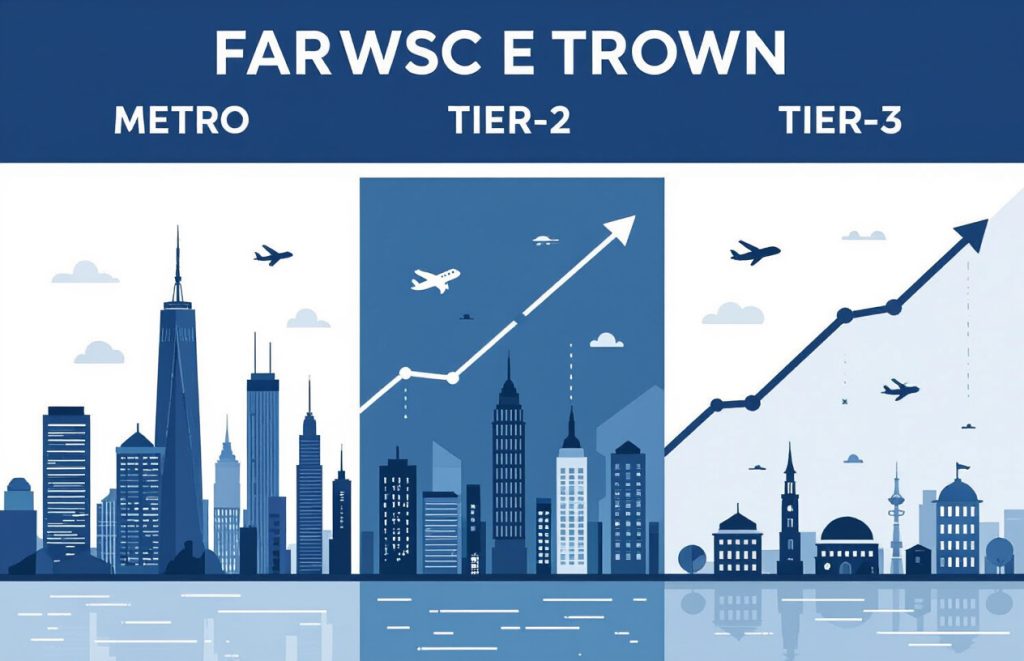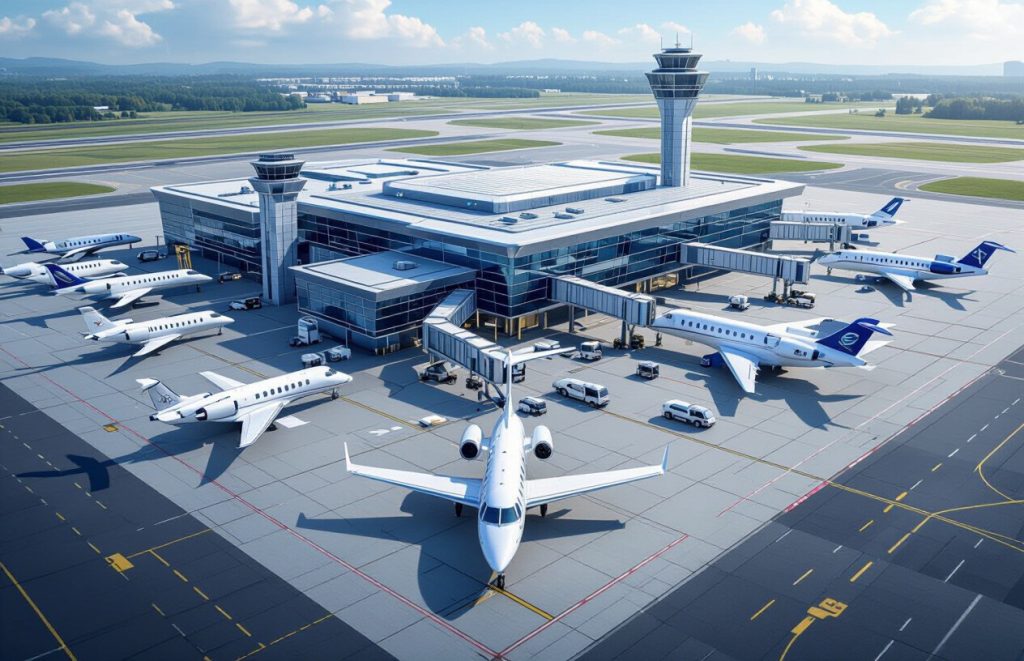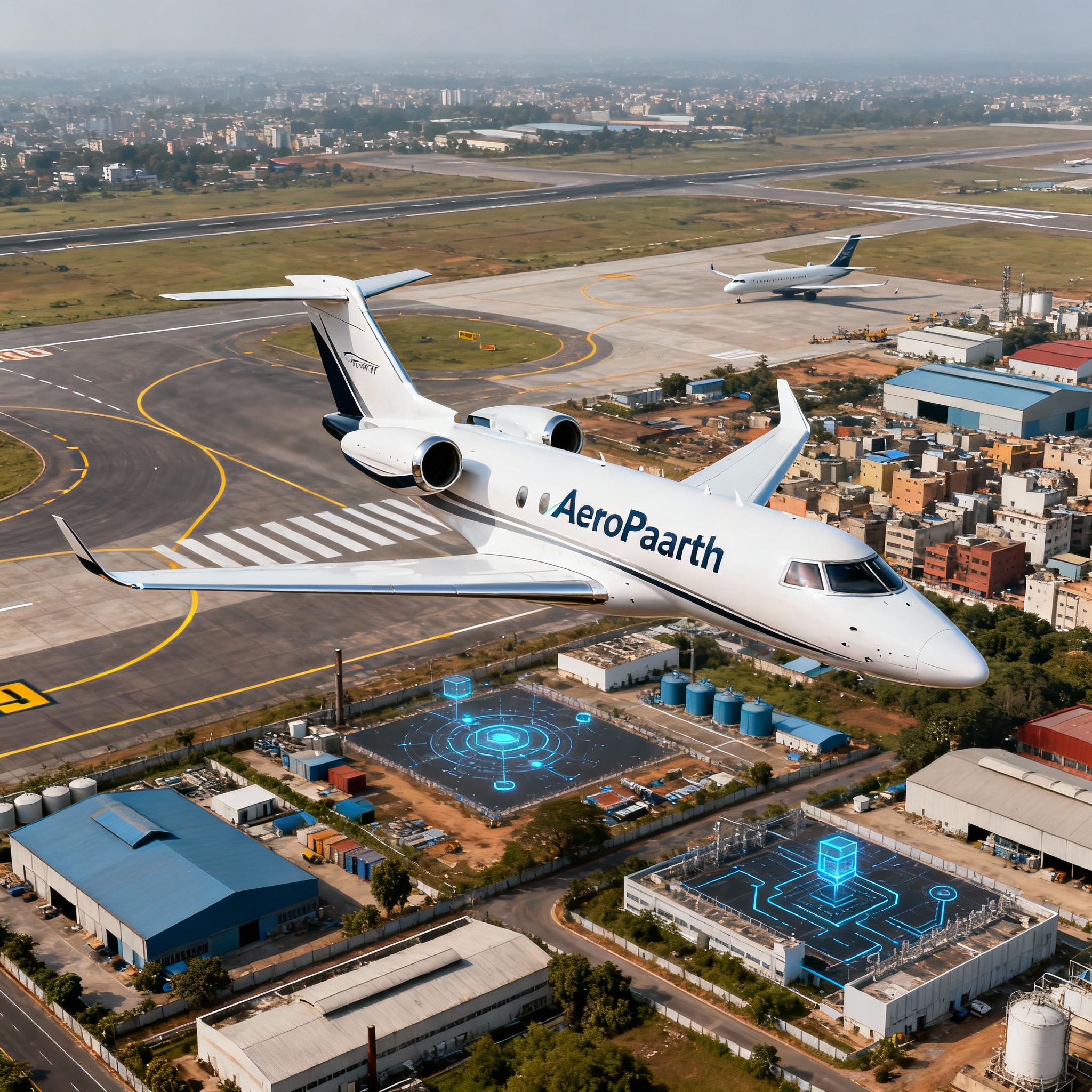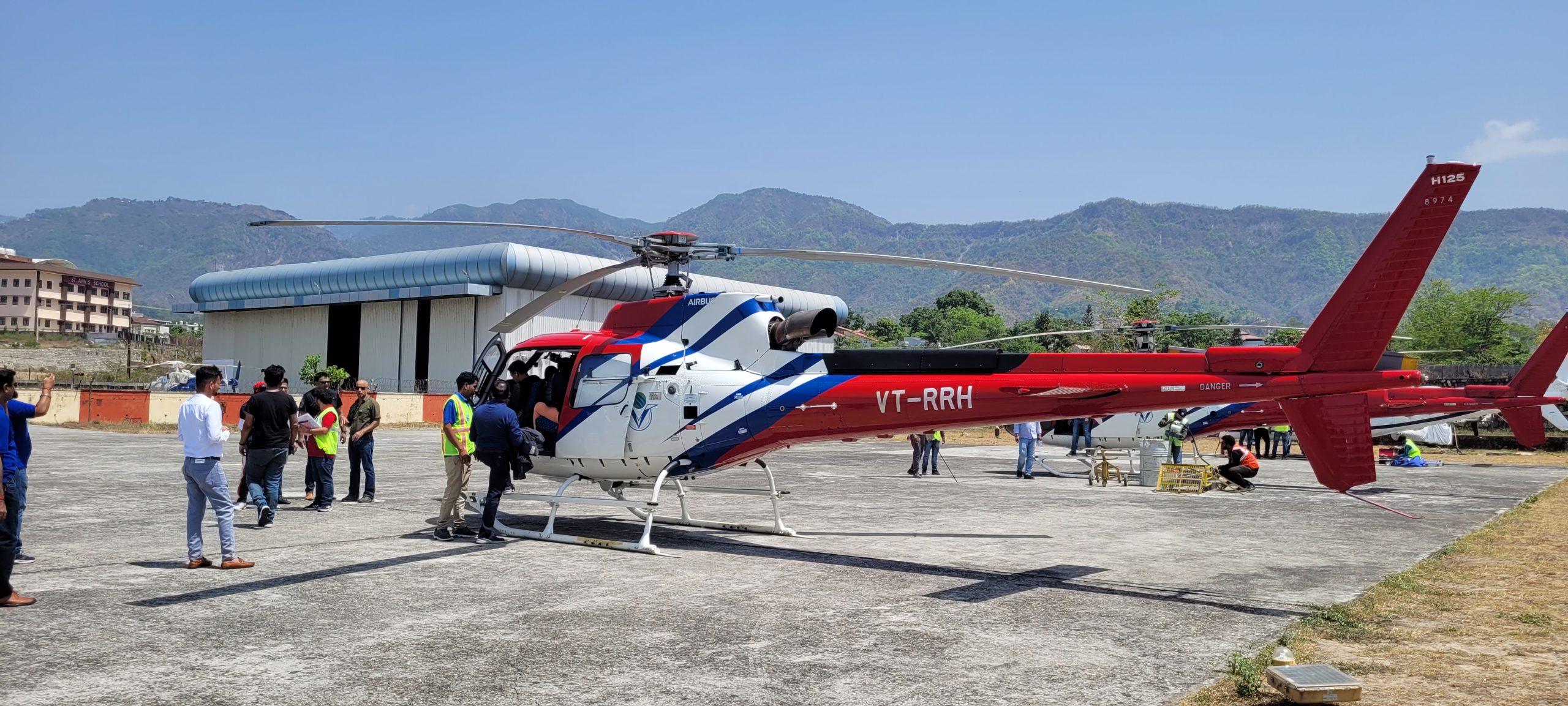Defining Tier-2 and Tier-3 Cities in the Indian Context
India’s urban landscape has traditionally been dominated by its metropolises – Delhi, Mumbai, Chennai, and Kolkata. However, the spotlight is now shifting to smaller but rapidly growing urban centers. Tier-2 cities like Pune, Jaipur, and Coimbatore are characterized by populations between 1-4 million, growing industrial bases, and considerably lower real estate costs compared to metros. These cities feature emerging IT parks, expanding educational institutions, and improving urban infrastructure, making them attractive destinations for businesses looking beyond saturated metro markets.
Tier-3 cities such as Surat, Indore, and Bhubaneswar represent the next frontier of urban growth in India. With populations typically under 1 million, these cities boast lower operational costs, availability of skilled workforce at competitive salaries, and significantly less congestion. What sets these cities apart is their specialized economic activities – Surat’s diamond industry, Indore’s automotive manufacturing, and Bhubaneswar’s educational institutions and IT services.
The economic profiles of these different tiers show interesting patterns. While metros have per capita incomes 2-3 times the national average, tier-2 cities hover around 1.5 times, and tier-3 cities are quickly catching up. The demographic makeup also differs, with tier-2 and tier-3 cities showing younger populations, higher growth rates, and increasing disposable incomes – all factors driving demand for premium services like private jet charter in India.
AeroPaarth, a rising name in business aviation, has been actively contributing to this shift by offering tailored charter services designed to meet the connectivity gaps in Tier-2 and Tier-3 cities. By making private jet travel more accessible, AeroPaarth has played a role in enabling businesses to expand their operations beyond metros with confidence and speed.

Identifying Key Growth Drivers
The expansion of business aviation into smaller Indian cities rides on several key trends. Economic liberalization has triggered industrial growth beyond traditional centers, with pharmaceutical manufacturing in Baddi, textile production in Tiruppur, and electronics assembly in Hosur creating new wealth centers requiring executive travel solutions.
Increased accessibility has become crucial as businesses expand their footprints. When executives need to visit multiple manufacturing facilities in a single day, commercial airline schedules often prove inadequate. The ability to book a private jet in India has transformed from luxury to necessity for many mid-sized companies maintaining operations across regional centers.
Government initiatives have played a pivotal role. The Regional Connectivity Scheme (UDAN) has revitalized numerous airports in smaller cities, creating the groundwork for private aviation services. The development of dedicated business aviation terminals at airports like Nagpur and Vijayawada demonstrates the government’s recognition of business aviation’s economic importance.
Corporate Social Responsibility initiatives have unexpectedly become a funding source for regional aviation infrastructure. Several large corporations have invested in airport facilities in smaller cities where they have significant operations, viewing this as both community development and business facilitation.
At the industry level, AeroPaarth has aligned with these growth drivers by bridging corporate demand with emerging aviation infrastructure. Their services are not just catering to luxury travelers but also enabling time-critical business operations, from connecting executives with remote industrial hubs to supporting medical and emergency travel needs in regions underserved by commercial airlines.
Emergence of New Aviation Hubs
Several tier-2 and tier-3 cities are emerging as significant aviation hubs. Nagpur, strategically located at India’s geographic center, has seen private jet operations increase by 47% between 2018 and 2022. Madurai has emerged as a surprising charter flight hotspot, serving businesses across southern Tamil Nadu. Dehradun, gateway to Uttarakhand’s industrial belt, has witnessed a 63% rise in business aircraft movements over the past five years.
The data tells a compelling story: business jet movements at non-metro airports increased from 12,467 in 2016 to over 28,000 in 2022.

Charter flights in India have grown most rapidly in manufacturing-heavy regions, with aircraft charter services reporting 60% of their bookings now originating from tier-2 and tier-3 cities.
The sectors driving this demand are diverse. Information technology remains prominent, with companies needing to transport specialists between development centers in cities like Pune, Coimbatore, and Bhubaneswar. Manufacturing enterprises in automotive, pharmaceuticals, and textiles sectors rely heavily on private jet services to connect their distributed production facilities. Energy companies developing renewable projects in remote locations have become significant users of charter plane services in India.
AeroPaarth has recognized these hubs early, expanding its services to centers like Dehradun, Indore, and Surat. By focusing on flexibility and regional demand, the company is helping unlock growth for businesses that rely on dependable private aviation connectivity.
Infrastructure, Accessibility, and Future Prospects
Upgradation of Airport Infrastructure
The landscape of business aviation in tier-2 and tier-3 Indian cities is undergoing a remarkable transformation, driven by significant airport infrastructure development. Over the past five years, more than 15 greenfield airports have been approved in cities like Navi Mumbai, Mopa (Goa), and Jewar (Greater Noida), creating new hubs for private jet flights and charter operations.

Existing airports in cities such as Indore, Vadodara, and Vijayawada have seen extensive modernization with expanded terminals, lengthened runways capable of accommodating larger business jets, and improved ground handling capabilities. In Surat, for instance, the airport has evolved from handling just a few flights weekly to becoming a vibrant center for business aviation, with dedicated facilities for private jets and charter flights.
Air traffic control systems across these emerging aviation centers have been upgraded with state-of-the-art navigation aids and surveillance technologies. The Airports Authority of India has implemented Advanced-Surface Movement Guidance and Control Systems (ASMGCS) at several tier-2 city airports, bringing their safety standards closer to metropolitan equivalents.
The private sector is increasingly investing in Fixed-Base Operations (FBOs) that provide specialized services for business jets. Cities like Nagpur, with its MIHAN project, are developing as MRO hubs, reducing the need to fly aircraft to Delhi or Mumbai for maintenance. This local availability of maintenance services has cut downtime for private aircraft operators and made private jet rental more practical for businesses based in smaller cities.
The Role of Policy and Regulation
The game-changer for regional aviation has been the UDAN (Ude Desh Ka Aam Nagrik) scheme, which has activated over 70 previously underserved airports. Though primarily aimed at commercial aviation, this infrastructure development has created viable bases for business aviation operations. Business jet charters now regularly operate from airports that were nearly dormant five years ago.
The government has introduced tax incentives for private investments in aviation infrastructure at tier-2/3 cities, including reduced GST for MRO services and tax holidays for investments in new aviation facilities. These policies have made it more attractive to establish services for private jet booking and charter flight operations in emerging markets.
Recent regulatory reforms have streamlined processes for aircraft registration and flight approvals. The Digital Sky platform has simplified permissions for business aircraft operations, reducing approval times from weeks to days—a critical improvement for charter aircraft in India seeking operational flexibility.
Challenges and Opportunities
Despite progress, business aviation in smaller Indian cities faces substantial hurdles. Operational costs remain high, with aviation turbine fuel still taxed heavily by many states. The shortage of skilled aviation professionals—from pilots to maintenance technicians—is particularly acute outside metro areas.
Regulatory complexity continues to hinder growth, with multiple authorities involved in approvals for charter flight booking and private jet operations. Market saturation in certain corridors has intensified competition, putting pressure on charter flight prices.
Nevertheless, the opportunities are compelling. India’s middle and upper-middle class in tier-2/3 cities is growing at 12% annually, creating new customers for private plane rental and charter services. Business integration with global markets has increased demand for efficient travel to locations poorly served by commercial airlines.
The drone technology revolution presents intriguing possibilities for business aviation. Several companies are exploring air taxi services using electric vertical take-off and landing (eVTOL) aircraft between business districts and airports in cities like Pune and Ahmedabad.
Future Outlook for Business Aviation
Industry analysts project 15-18% annual growth for business aviation in tier-2/3 cities over the next decade, outpacing the national average. The pandemic has accelerated this trend, with health safety concerns driving more executives toward private aviation options.

Charter operations are evolving beyond the traditional model. Platforms allowing customers to book private jets online have democratized access, while fractional ownership programs are gaining traction among medium-sized businesses unable to justify full aircraft ownership.
The economic impact is significant—each new business aviation operation in a tier-2/3 city typically creates 30-45 direct jobs and up to 300 indirect ones. More importantly, enhanced connectivity is attracting investment, with several companies citing improved private aviation access as a factor in locating operations in smaller cities.
AeroPaarth’s vision for the next decade aligns with this growth trajectory. By focusing on regional connectivity, customized charter solutions, and expanding into new aviation hubs, AeroPaarth is not only serving immediate business needs but also contributing to the long-term transformation of India’s Tier-2 and Tier-3 cities into thriving economic powerhouses.
#BusinessAviation #PrivateJetsIndia #CharterFlightsIndia #AviationGrowth #ExecutiveTravel #FlyPrivate #CorporateAviation #Tier2Cities #Tier3Cities #EmergingIndia #IndiaGrowthStory #UrbanTransformation #RegionalConnectivity #UDAN #AirportInfrastructure #AviationPolicyIndia #MakeInIndiaAviation #FutureOfTransport #IndiaBusinessGrowth #AviationInnovation #TravelForBusiness #EconomicDevelopment #ConnectIndia #GrowthBeyondMetros #AeroPaarth #SmartBusinessTravel #AviationLeadership #RegionalAviation



